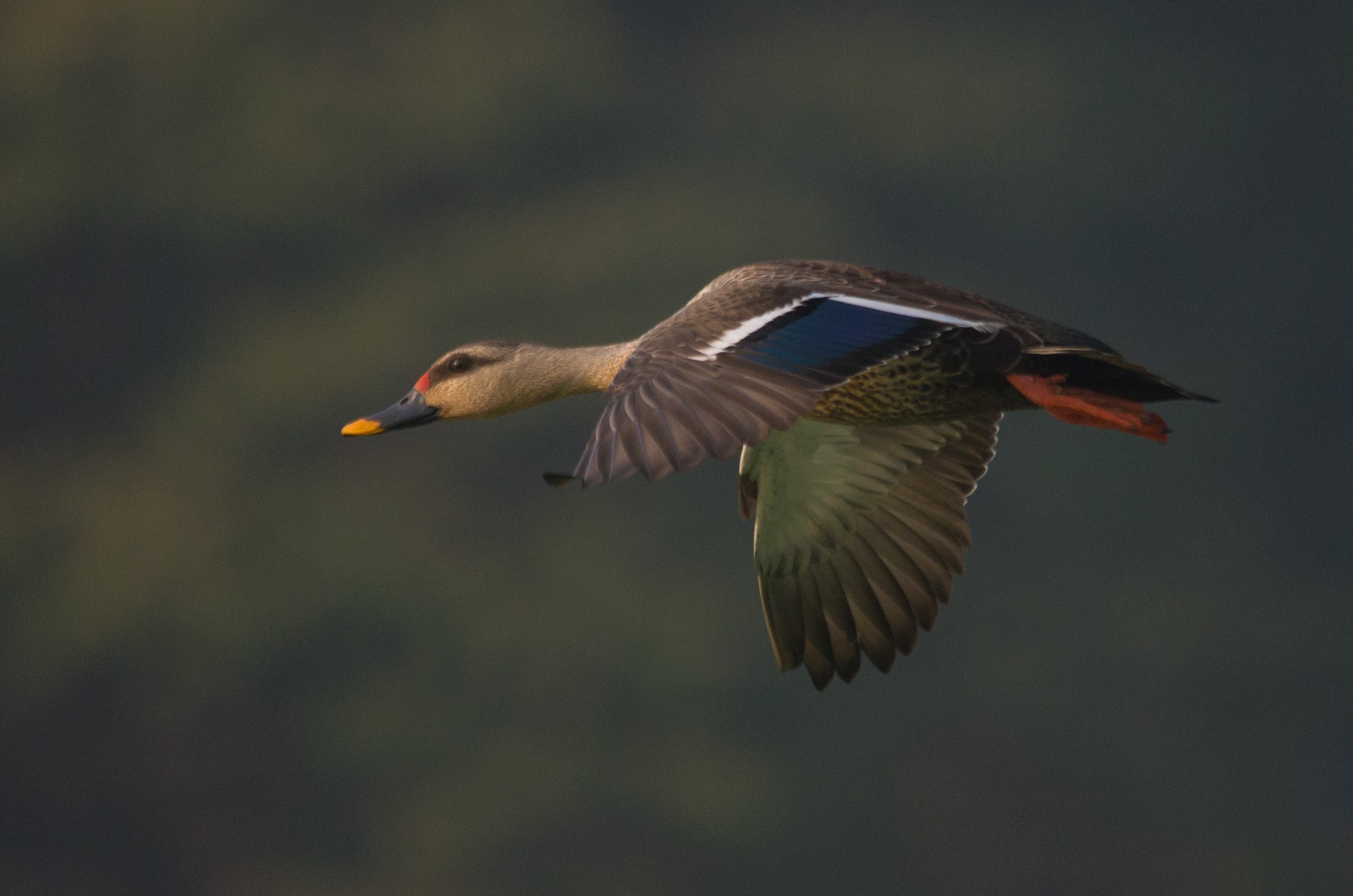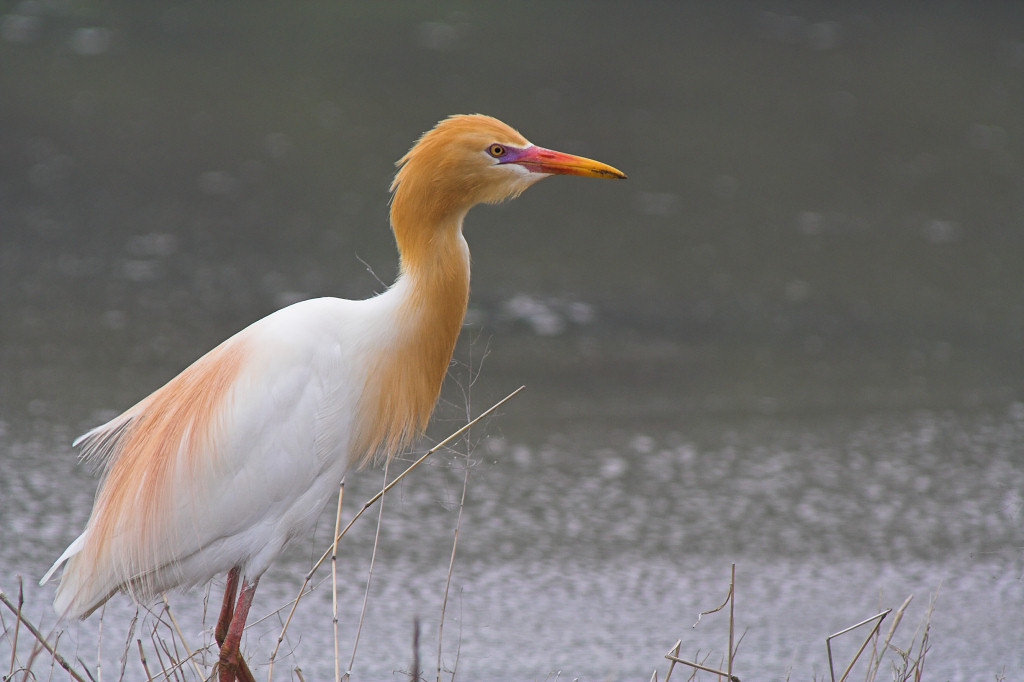|
Vettangudi Bird Sanctuary
Vettangudi Bird Sanctuary is a protected area, declared in June 1977 near Thirupattur in the Sivaganga District that includes the periya kollukudi patti, chinna kollukudi patti, and vettangudi patti irrigation tanks. The heaviest rainfall occurs between October and December, when the northeast monsoon brings in 330-390 mm of rainfall. Fauna This area of small drainage basins attracts more than 8,000 winter migratory birds belonging to 217 species, mostly from European and North Asian countries. It is a breeding habitat for grey herons, darters, spoonbills, white ibis, Asian openbill stork, and night herons. It has also attracted indigenous endangered species including painted stork, grey heron, darter, little cormorant, little egret, intermediate egret, cattle egret, common teal, Indian spot-billed ducks, pintail, and flamingo Flamingos or flamingoes are a type of Wader, wading bird in the Family (biology), family Phoenicopteridae, which is the only extant family in ... [...More Info...] [...Related Items...] OR: [Wikipedia] [Google] [Baidu] |
Protected Area
Protected areas or conservation areas are locations which receive protection because of their recognized natural, ecological or cultural values. There are several kinds of protected areas, which vary by level of protection depending on the enabling laws of each country or the regulations of the international organizations involved. Generally speaking though, protected areas are understood to be those in which human presence or at least the exploitation of natural resources (e.g. firewood, non-timber forest products, water, ...) is limited. The term "protected area" also includes marine protected areas, the boundaries of which will include some area of ocean, and transboundary protected areas that overlap multiple countries which remove the borders inside the area for conservation and economic purposes. There are over 161,000 protected areas in the world (as of October 2010) with more added daily, representing between 10 and 15 percent of the world's land surface area. As of 20 ... [...More Info...] [...Related Items...] OR: [Wikipedia] [Google] [Baidu] |
Little Cormorant
The little cormorant (''Microcarbo niger'') is a member of the cormorant family of seabirds. Slightly smaller than the Indian cormorant it lacks a peaked head and has a shorter beak. It is widely distributed across the Indian Subcontinent and extends east to Java, where it is sometimes called the Javanese cormorant. It forages singly or sometimes in loose groups in lowland freshwater bodies, including small ponds, large lakes, streams and sometimes coastal estuaries. Like other cormorants, it is often found perched on a waterside rock with its wings spread out after coming out of the water. The entire body is black in the breeding season but the plumage is brownish, and the throat has a small whitish patch in the non-breeding season. These birds breed gregariously in trees, often joining other waterbirds at heronries. Description The little cormorant is about long and only slightly smaller than the Indian cormorant (''Phalacrocorax fuscicollis''). The Indian cormorant has a n ... [...More Info...] [...Related Items...] OR: [Wikipedia] [Google] [Baidu] |
Bird Sanctuaries Of Tamil Nadu
Birds are a group of warm-blooded vertebrates constituting the class Aves (), characterised by feathers, toothless beaked jaws, the laying of hard-shelled eggs, a high metabolic rate, a four-chambered heart, and a strong yet lightweight skeleton. Birds live worldwide and range in size from the bee hummingbird to the ostrich. There are about ten thousand living species, more than half of which are passerine, or "perching" birds. Birds have whose development varies according to species; the only known groups without wings are the extinct moa and elephant birds. Wings, which are modified forelimbs, gave birds the ability to fly, although further evolution has led to the loss of flight in some birds, including ratites, penguins, and diverse endemic island species. The digestive and respiratory systems of birds are also uniquely adapted for flight. Some bird species of aquatic environments, particularly seabirds and some waterbirds, have further evolved for swimming. Birds ... [...More Info...] [...Related Items...] OR: [Wikipedia] [Google] [Baidu] |
Flamingo
Flamingos or flamingoes are a type of Wader, wading bird in the Family (biology), family Phoenicopteridae, which is the only extant family in the order Phoenicopteriformes. There are four flamingo species distributed throughout the Americas (including the Caribbean), and two species native to Afro-Eurasia. A group of flamingoes is called a "flamboyance." Etymology The name ''flamingo'' comes from Portuguese language, Portuguese or Spanish language, Spanish ("flame-colored"), which in turn comes from Old Occitan, Provençal – a combination of ("flame") and a Germanic-like suffix ''wikt:-ing#Etymology 3, -ing''. The word may also have been influenced by the Spanish ethnonym ("Fleming" or "Flemish"). The name of the genus, ''Phoenicopterus'', is from the Greek , ); other genera names include ''Lesser flamingo, Phoeniconaias,'' which means "crimson/red Naiad, water nymph (or naiad)", and ''Phoenicoparrus,'' which means "crimson/red bird (though, an unknown bird of om ... [...More Info...] [...Related Items...] OR: [Wikipedia] [Google] [Baidu] |
Northern Pintail
The pintail or northern pintail (''Anas acuta'') is a duck species with wide geographic distribution that breeds in the northern areas of Europe and across the Palearctic and North America. It is migratory and winters south of its breeding range to the equator. Unusually for a bird with such a large range, it has no geographical subspecies if the possibly conspecific duck Eaton's pintail is considered to be a separate species. This is a large duck, and the male's long central tail feathers give rise to the species' English and scientific names. Both sexes have blue-grey bills and grey legs and feet. The drake is more striking, having a thin white stripe running from the back of its chocolate-coloured head down its neck to its mostly white undercarriage. The drake also has attractive grey, brown, and black patterning on its back and sides. The hen's plumage is more subtle and subdued, with drab brown feathers similar to those of other female dabbling ducks. Hens make a coarse ... [...More Info...] [...Related Items...] OR: [Wikipedia] [Google] [Baidu] |
Indian Spot-billed Duck
The Indian spot-billed duck (''Anas poecilorhyncha'') is a large dabbling duck that is a non-migratory breeding duck throughout freshwater wetlands in the Indian subcontinent. The name is derived from the red spot at the base of the bill that is found in the mainland Indian population. When in water it can be recognized from a long distance by the white tertials that form a stripe on the side, and in flight it is distinguished by the green Speculum feathers, speculum with a broad white band at the base. This species and the eastern spot-billed duck (''A. zonorhyncha'') were formerly considered conspecific, together called the spot-billed duck (''A. poecilorhyncha''). Taxonomy The Indian spot-billed duck was Species description, described by the naturalist Johann Reinhold Forster in 1781 under its current binomial name ''Anas poecilorhyncha''. The name of the genus ''Anas'' is the Latin word for a duck. The specific epithet ''poecilorhyncha'' combines the classical Greek words '' ... [...More Info...] [...Related Items...] OR: [Wikipedia] [Google] [Baidu] |
Common Teal
The Eurasian teal (''Anas crecca''), common teal, or Eurasian green-winged teal is a common and widespread duck that breeds in temperate Eurosiberia and migrates south in winter. The Eurasian teal is often called simply the teal due to being the only one of these small dabbling ducks in much of its range. The bird gives its name to the blue-green colour teal. It is a highly gregarious duck outside the breeding season and can form large flocks. It is commonly found in sheltered wetlands and feeds on seeds and aquatic invertebrates. The North American green-winged teal (''A. carolinensis'') was formerly (and sometimes is still) considered a subspecies of ''A. crecca''. Taxonomy The Eurasian teal belongs to the "true" teals, a group of small ''Anas'' dabbling ducks closely related to the mallard (''A. platyrhynchos'') and its relatives; that latter group in fact seems to have evolved from a true teal. It forms a superspecies with the green-winged teal and the speckled ... [...More Info...] [...Related Items...] OR: [Wikipedia] [Google] [Baidu] |
Cattle Egret
The cattle egret (''Bubulcus ibis'') is a cosmopolitan species of heron (family Ardeidae) found in the tropics, subtropics, and warm-temperate zones. It is the only member of the monotypic genus ''Bubulcus'', although some authorities regard its two subspecies as full species, the western cattle egret and the eastern cattle egret. Despite the similarities in plumage to the egrets of the genus ''Egretta'', it is more closely related to the herons of '' Ardea''. Originally native to parts of Asia, Africa, and Europe, it has undergone a rapid expansion in its distribution and successfully colonised much of the rest of the world in the last century. It is a white bird adorned with buff plumes in the breeding season. It nests in colonies, usually near bodies of water and often with other wading birds. The nest is a platform of sticks in trees or shrubs. Cattle egrets exploit drier and open habitats more than other heron species. Their feeding habitats include seasonally inundated gr ... [...More Info...] [...Related Items...] OR: [Wikipedia] [Google] [Baidu] |
Intermediate Egret
The intermediate egret, median egret, smaller egret, or yellow-billed egret (''Ardea intermedia'') is a medium-sized heron. Some taxonomists put the species in the genus ''Egretta'' or ''Mesophoyx''. It is a resident breeder from east Africa across the Indian subcontinent to Southeast Asia and Australia. Taxonomy Some authorities classify the intermediate egret in its own monotypic genus, ''Mesophoyx'', while others place it with the smaller egrets in ''Egretta''. There are three recognised subspecies, and these are sometimes raised in to species: * ''A. i. brachyrhyncha'' Brehm, 1854 "yellow-billed egret" - sub-Saharan Africa * ''A.i. intermedia'' Wagler, 1827 "intermediate egret" - Asia from the Russian Far East to Japan to India and the Greater Sundas * ''A. i. plumifera'' Gould, 1848 "plumed egret" - eastern Indonesia, New Guinea and Australia. ''A.i. intermedia'' differs from ''A.i. brachyrhyncha'' and ''A. i. plumifera'' by having a black bill when in breeding plumag ... [...More Info...] [...Related Items...] OR: [Wikipedia] [Google] [Baidu] |
Painted Stork
The painted stork (''Mycteria leucocephala'') is a large wading bird, wader in the stork family. It is found in the wetlands of the plains of tropical Asia south of the Himalayas in the Indian Subcontinent and extending into Southeast Asia. Their distinctive pink Flight feather#Tertials, tertial feathers of the adults give them their name. They forage in flocks in shallow waters along rivers or lakes. They immerse their half open beaks in water and sweep them from side to side and snap up their prey of small fish that are sensed by touch. As they wade along they also stir the water with their feet to flush hiding fish. They nest colonially in trees, often along with other waterbirds. The only sounds they produce are weak moans or bill clattering at the nest. They are not bird migration, migratory and only make short distance movements in some parts of their range in response to changes in weather or food availability or for breeding. Like other storks, they are often seen soaring ... [...More Info...] [...Related Items...] OR: [Wikipedia] [Google] [Baidu] |

.jpg)
-_Breeding_plumage_W2_IMG_8770.jpg)
.jpg)


